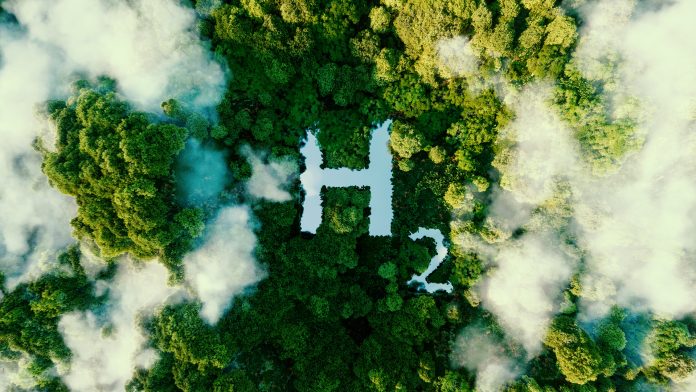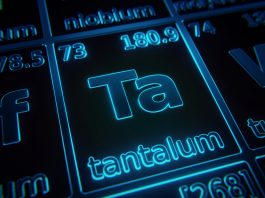Matthijs Soede, Director of the Clean Hydrogen Mission, explains how the initiative is working to strengthen Europe’s clean hydrogen infrastructure.
Mission Innovation (MI) is a global initiative of 23 countries and the European Commission (on behalf of the European Union) to accelerate global clean energy innovation and action, achieve performance breakthroughs and cost reductions, and facilitate widely affordable and reliable clean energy solutions.
The initiative consists of seven ‘Missions’ that bring together high ambition alliances between countries, corporations, investors, and research institutes to reach ambitious and inspirational goals by 2030 and make sure more innovation happens, more rapidly.
On 2 June 2021, the Mission Innovation Clean Hydrogen Mission – a new global coalition to support the development of the global clean hydrogen economy – was launched at the 6th Mission Innovation Ministerial meeting, hosted by Chile. The goal of the Clean Hydrogen Mission (‘the Mission’) is to reduce the costs of clean hydrogen to the end user to $2/kg by 2030. This will be achieved through the Mission supporting both innovation and the development and the delivery of at least 100 large-scale integrated hydrogen ‘valleys’ worldwide. These valleys or clusters would involve large-scale hydrogen production, infrastructure and end-use applications and can pave the way for economies of scale and commercial viability, reducing cost and enabling market adoption.
The Innovation Platform spoke to Matthijs Soede, Director of the Clean Hydrogen Mission, to find out more about the work of the Mission and the future of Europe’s clean hydrogen infrastructure.
What are your innovation priorities for the near future?
We strongly believe that innovations are needed throughout the full value chain. It is not only on the production side, but also in the distribution, storage, and the use of clean hydrogen, that research and innovation is needed to achieve cost reductions. This was also a clear result of our survey among our members. We presented this in our discussion paper launched alongside the COP26 in Glasgow.
We are currently setting up working groups in the different areas. Regarding end uses, we have established an industry-government working group to support the development of hydrogen-fuel-cell-powered technologies for large off-road vehicles, including pit mining trucks, construction excavators, and agriculture tractors. This topic includes hydrogen infrastructure for these applications.
For storage and distribution, we have set up an international working group to identify case studies and exemplars of clean hydrogen storage and distribution and soon we will have a group on production in place.
What are clean hydrogen valleys and why are they so important within your mission? Your goal is to deliver 100 clean hydrogen valleys by 2030. What barriers do you need to overcome and what support do you need to meet this goal?
Hydrogen valleys are integrated hydrogen value chains, which include the production, storage, and distribution of hydrogen to various end users via different methods of transport in a defined geographic area. Hydrogen valleys usually encompass complete hydrogen value chains, can vary in scale and composition, ideally supply multiple end-use sectors, and can cross national boundaries. These hydrogen valleys will generate economies of scale, pushing down clean hydrogen costs to catalyse the development of a global clean hydrogen economy.
Why are they so important? In many discussions, we notice that there is no balance between supply and demand, and, in these valleys, we stimulate bringing them together. We aim to have different end users in a valley stimulating the clean energy transition and decarbonisation of different sectors.
The main barrier we see to achieving the goal of 100 clean hydrogen valleys by 2030 is starting to put in place all the hydrogen projects that are already designed but still need approval or financial support. In theory, everything is on the table. Therefore, it would be a huge support if governments and relevant institutions accelerate the process of regulation and standardisation and foster international collaboration by facilitating knowledge sharing and technology transfer.
We see that, at a global level, there is a huge interest in the hydrogen valley concept. The US is supporting the development of ‘hydrogen hubs’, which are similar to the hydrogen valleys, and India has a call out for the development of hydrogen valleys.
We are monitoring the development of the valleys via our H2V.EU platform. Currently, we can already present 38 valleys in different stages of development. By the end of 2023, we hope to see this number close to 100, and, by the end of this decade, they will be fully deployed. This platform also serves as a place to collaborate and exchange best practices.
How is the current global economy and infrastructure set to cope with the scaling up of hydrogen? What are the major challenges that need to be addressed in order to soften the cost-intensive element of clean hydrogen production?
The current global economy and infrastructure set has improved in recent years. There is a common agreement that we will have to speed up the energy transition and decarbonisation of industries. It is important that there is a massive roll-out of clean and renewable energy technologies. To make this transition robust and secure, clean hydrogen will play an important role as energy storage and a carrier for hard-to-abate sectors. We see, particularly in the Northern Hemisphere, notable projects and efforts to speed up progress. Nevertheless, to be able to scale up clean hydrogen production and use globally, we still face major challenges to keeping up with the goals we set for ourselves, and which are necessary to reach our goal of making clean energy affordable, attractive, and accessible for all. As major challenges, the following key topics can be named: Standards, Certification, Demand Creation and Management, and Finance and Investment for both research and innovation (R&I), and deployment.
Lately, there are many new hydrogen initiatives and partnerships for collaboration. Hydrogen Landscape and the MI Clean Hydrogen Mission is one of them, but we are in good contact with other international initiatives like the Clean Energy Ministerial Hydrogen Initiative, the International Energy Agency (IEA) Technology Collaboration Platforms, and the International Partnership for Hydrogen and Fuel Cells in the Economy (IPHE). We try to avoid overlap and co-ordinate our activities as much as possible.
Governments and companies should work together to dramatically increase the number and geographical distribution of clean hydrogen demonstration projects to ensure that these appropriately cover each of hydrogen’s high-value end-use sectors, including maritime shipping, heavy industry, and long-duration energy storage. Governments and the private sector should agree on principles to guide a deeper and more rapid sharing of knowledge from these demonstrators, including a commitment to share the lessons learned from all publicly funded projects. Doing so will help overcome technology availability barriers and accelerate the pace of deployment in multiple regions in parallel.
Regarding the topic ‘Standards and Certification’, governments and companies should agree on a comprehensive portfolio of international standards and associated certification schemes for renewable and low-carbon hydrogen, addressing emissions accounting, safety, and operational issues, including leakage.
Matthijs Soede
Director
Clean Hydrogen Mission
Please note, this article will also appear in the twelfth edition of our quarterly publication.









